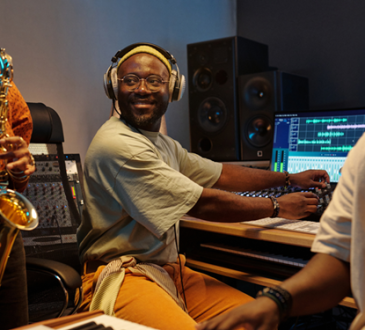
Ballet is associated with grace and elegance, but behind the poise lies an intensive training system built on strength, control, and endurance. Today, ballet-inspired workouts are gaining popularity for their ability to tone muscles, improve flexibility, and boost overall body awareness. Whether you’re taking a ballet class in Singapore or incorporating ballet techniques into your regular training, the results can be both aesthetic and functional. Here’s how ballet dancer workouts shape and strengthen the body.
Engages Deep Core Muscles
Ballet movements demand a high level of core engagement. Every position, from pliés to arabesques, requires the abdominal and lower back muscles to remain activated for balance and control. Unlike isolated exercises, ballet recruits deep core stabilisers throughout the session. Over time, this enhances postural strength and builds a more defined midsection. A ballet dancer’s workout naturally improves body alignment by reinforcing proper spinal support.
Tones and Lengthens the Legs
One of the most noticeable outcomes of a ballet-inspired regimen is lower body toning. Repetitive movements like tendus, dégagés, and relevés target the thighs, calves, and glutes with high precision. These exercises focus on resistance through body weight rather than external equipment, which results in lean muscle development. Leg extensions, held positions, and slow, controlled transitions challenge the muscle endurance in the entire lower half, creating the sculpted appearance typically associated with ballet dancers.
Enhances Posture and Alignment
Postural awareness is central to ballet training. Every class begins and ends with an instruction on how you can align the spine, shoulders, and hips. This focus transfers into daily movement habits. A ballet dancer’s workout teaches the body to carry itself upright with poise and balance, reducing the risk of slouching or overcompensating with the wrong muscle groups. Over time, this consistent reinforcement leads to improved posture, making one appear more confident and energised.
Improves Joint Mobility and Flexibility
Ballet places a strong emphasis on joint articulation and a full range of motion. Movements are designed to be fluid and expansive, encouraging flexibility in the hips, ankles, shoulders, and spine. Classes typically include a warm-up and stretching segment that helps increase mobility gradually and safely. This makes ballet an effective option for those looking to enhance flexibility without the jarring impact of high-intensity workouts. Better joint mobility supports pain-free movement and reduces the risk of injury during other physical activities.
Learn More: The Balancing Act of Ballet
Builds Endurance Through Controlled Repetition
Although ballet is not a cardiovascular-intensive workout, it does build muscular endurance through repetition and sustained movement. Holding poses and executing slow transitions between positions challenge muscle control and stamina. The effort required to maintain balance, extend limbs, and repeat sequences strengthens smaller stabilising muscles that may be neglected in standard fitness routines. This endurance training helps build resilience and improves physical output over longer sessions.
Strengthens the Back and Shoulders
Upper body strength is critical in ballet, especially when executing arm positions or maintaining poise during movements. A ballet dancer’s workout strengthens the back, shoulders, and arms through repeated port de bras and sustained arm lifts. These movements are low-impact but highly effective at improving posture and upper-body control. Compared to weight-based strength training, ballet enhances muscle definition without adding bulk.
Encourages Mental Focus and Coordination
Ballet is as much a mental discipline as a physical one. Memorising movement sequences, coordinating limbs, and executing timing all require focused attention. Participating in a ballet class in Singapore required full mindfulness and concentration, which translates into improved neuromuscular coordination. This mental engagement improves reaction time, balance, and body control. In the long term, it supports better functional movement and reduces the risk of accidental injury caused by poor coordination.
Supports Gentle Recovery and Injury Prevention
Ballet-inspired movements are low-impact, ideal for active recovery or cross-training. Movements can be modified for beginners or those with joint sensitivity. The focus on alignment, balance, and controlled stretching supports muscle recovery while avoiding strain. This makes ballet a sustainable option for maintaining fitness throughout all stages of life. It also complements other training programmes by providing a foundation in movement quality and control.
For more information about ballet-inspired workout programmes, contact BalletBody today.




